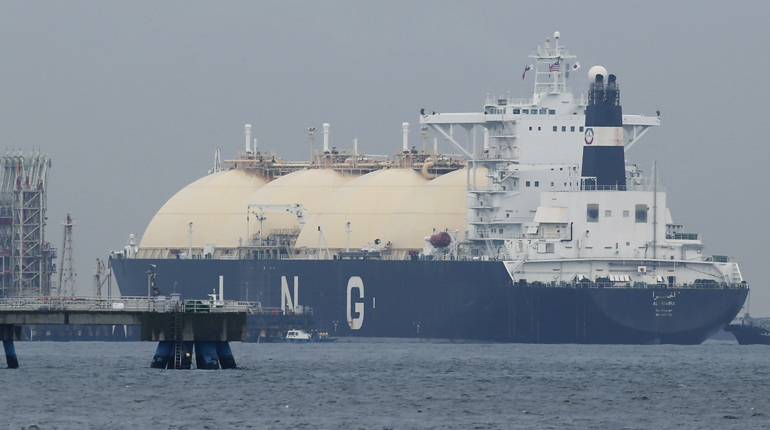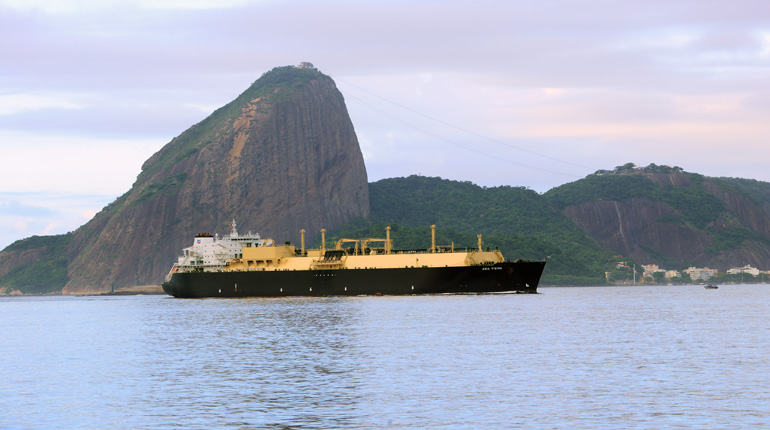 An LNG tanker arriving at Yokohama in 2013. Large volumes of LNG transit Japan. (PA)
An LNG tanker arriving at Yokohama in 2013. Large volumes of LNG transit Japan. (PA)
Japan may be taking an early, albeit low-profile, lead in the race to become the Asia Pacific region’s main location for trading spot LNG cargoes, despite Singapore’s eagerness to become the financial and physical centre for LNG transactions in the region.
Several speakers at the LNG18 conference in Perth this week voiced their support for Tokyo becoming the central point in the region for LNG trades. Their reasons are Japan’s proximity to major supply points and the number of cargoes that enter its waters, in addition to the recent surfeit of shipments caused by lower-than-expected regional demand.
Meg Gentle, president of marketing at United States LNG exporter Cheniere, told Interfax Natural Gas Daily that, while she envisaged many hubs emerging in Asia Pacific, she is backing Japan as an obvious location.
"I always encourage the Japanese because [Japan] takes about 80 cargoes of LNG per month so they have the physical liquidity there," Gentle said.
A hub would need to have both physical and financial capabilities, Gentle added, "so that we can have some transparent pricing to trade and manage risk across the region".
"The hubs that will be successful will be financial trading in places where there is a lot of physical [trading], and that is a bit of a challenge for Asia because it’s different from the US and Europe, which are massively interconnected with pipelines," Gentle added.
Hiroshi Hashimoto, senior researcher in the gas group at Japan’s Institute of Energy Economics, told NGD he also sees multiple hubs developing in Asia, "maybe some with physical, maybe some with financial, but the idea is to have [a] reliable pricing index". This could be possible even without the rapid development of a spot market because some Japanese buyers have excess volumes, Hashimoto added.
Singapore and China
Singapore has been pushing to become a trading hub for LNG as a compliment to its established role in global oil trading. Last year, the Singapore Exchange launched the Sling price index, offering a flexible financial mechanism for pricing LNG contracts. It hopes the index will become the leading benchmark for LNG pricing in Asia.
Meanwhile, China could also emerge as another trading hub, observers say, given the sizeable volume of LNG and pipeline gas it imports.
Although Japan does not have pipeline interconnections with other countries, the volume of LNG transiting the country gives it an initial advantage, with liquidity expected to increase as the electricity sector is deregulated.
The LNG market does not yet have the same liquidity as the oil market, Gentle noted. "As they [Japan] deregulate their market, there may be more buyers that we can trade physical and then financial contracts with […] Until we have that, it’s really hard to get the optimisation that you see in the oil markets, where anyone knows that they can go to the market and buy LNG, oil or whatever they need. But I’m encouraged – we will get there," Gentle said.
The need for a hub is compelling as US suppliers ramp up their sales to Asia, as Cheniere expects to do. "All the while that we’re bringing gas at a US price, a Henry Hub price, and selling it into the Asian LNG price, it’s going to be a little bit uncorrelated with the US. So if I know that in a year I’m going to deliver 12 cargoes to Asia at the Asian price, I have to have a way in a futures market to hedge the risk if my US price goes up and I’m not making money on that trade," Gentle added.
Room for US and Aussie supply
Meanwhile, Cheniere believes that gas consumption in the Asia Pacific market is set to grow at a rapid enough pace for US LNG to complement rather than compete with Australian gas and other supply sources, with the impetus being provided by the emergence of smaller customers and floating regasification technology.
Cheniere does not anticipate US LNG undercutting Australian supplies, it thinks the two could work alongside each other to meet the needs of individual customers. "We know that supply will come from the US into Asia because Asia is three-quarters of the LNG market and supply from the US will eventually be about 20% of the total LNG market," Gentle said.
"We really view it as room in the Asian market for both Australia and US gas […] The increase in FSRU markets is incredible and it is happening in Asia as well to reach smaller markets like Thailand and Indonesia, so I see enough growth in the market that LNG is still structurally short over the long term," she added.








Talk to us
Natural Gas Daily welcomes your comments. Email us at [email protected].